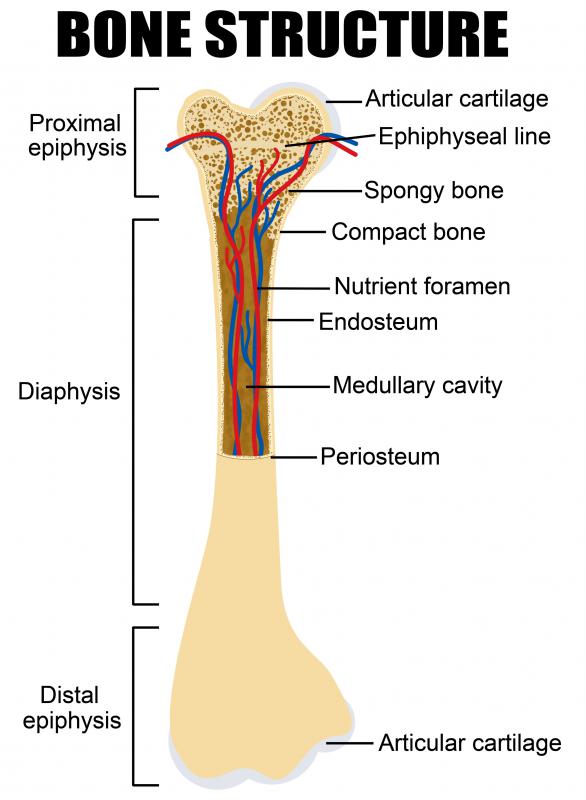At WiseGEEK, we're committed to delivering accurate, trustworthy information. Our expert-authored content is rigorously fact-checked and sourced from credible authorities. Discover how we uphold the highest standards in providing you with reliable knowledge.
What is Epiphysiodesis?
Epiphysiodesis is a pediatric surgical procedure done on a child who has one leg longer than the other. This disorder is referred to as limb length discrepancy (LLD). If limb length discrepancy is severe enough to interfere with walking or cause other skeletal deformities, it should be corrected before the child reaches maturity.
Long bones in children who are still growing have a region at each end called the epiphyseal plate. The epiphyseal plate is made of cartilage cells that can rapidly divide and allow the bone to expand in length. This plate is in a region of the bone known as the metaphysis, where bone growth occurs. At skeletal maturity, the epiphyseal plate hardens into bone and any growth will stop. Epiphysiodesis is done to manipulate the epiphyseal plate before the child reaches maturity to slow the growth of the leg that is longer.

To diagnose a child with LLD, the physician would first need to perform a complete physical exam and history of the patient. Measurements would need to be taken of the legs to determine whether one leg is shorter than the other. This is often done by placing objects of known thickness, such as books, beneath one foot of the patient until the pelvis is level. Full length X-rays taken while the child is standing would also show a difference in leg length. Other imaging tests, such as the computed tomography (CT) scan or magnetic resonance imaging (MRI) may aid in diagnosis.

Surgery is usually performed on children who have a difference of at least 1 inch (2-2.5 cm) in the length of their legs. Epiphysiodesis can be done on patients with a difference in leg length of 2 inches (5 cm) or less. Correction of limb length discrepancy can be somewhat challenging, as the physician must predict the amount of bone growth still to occur in each patient. The goal of epiphysiodesis is to slow the growth in the longer leg and give the shorter leg time to grow and catch up in length.

Epiphysiodesis was first developed as an open surgery. This surgery is done while the patient is under general anesthesia and it requires a hospital stay of up to one week. To perform this procedure, the physician makes an incision, usually in the knee area, and the bone is rotated to destroy the epiphyseal plate. Patients are then required to wear a cast for three to four weeks and not put any weight on the affected leg for four to six weeks.

The percutaneous epiphysiodesis was developed as a less invasive alternative. A small incision is made on each side of the knee and a drill and guidewire are used to scrape away the epiphyseal plate. The patient still needs to wear a cast, but weight-bearing exercises can begin shortly after surgery.
Complete recovery from the surgery may take from eight to 12 weeks. Patients should report any complications or signs of infection to the physician. Monitoring of growth and leg length will need to be done until the child reaches skeletal maturity.
AS FEATURED ON:
AS FEATURED ON:

















Discuss this Article
Post your comments